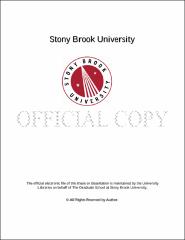| dc.identifier.uri | http://hdl.handle.net/11401/76551 | |
| dc.description.sponsorship | This work is sponsored by the Stony Brook University Graduate School in compliance with the requirements for completion of degree. | en_US |
| dc.format | Monograph | |
| dc.format.medium | Electronic Resource | en_US |
| dc.language.iso | en_US | |
| dc.publisher | The Graduate School, Stony Brook University: Stony Brook, NY. | |
| dc.type | Dissertation | |
| dcterms.abstract | If you happened to have been an American composer born in California at the dawn of the Twentieth Century, you might have followed the career path of Sidney Robertson Cowell. Cowell studied counterpoint at the San Francisco Conservatory before developing a fascination with music outside the Western Canon. She briefly worked as a music teacher but was soon swept up in the surge of ethnographic studies sponsored by Franklin D. Roosevelt’s New Deal, initially assisting Charles Seeger and eventually making her own field recordings of American folk music. In 1938, she secured a Works Projects Administration grant for the Northern California Folk Song Project, an undertaking that eventually produced two hundred acetate discs filled with thirty-five hours of field recordings in twelve different languages. These recordings, which are housed at the Library of Congress, present a remarkably rich depiction of a particular geographical location at a particular time in American history. Field Reports is a seven-movement musical work that merges aspects of American folk music, contemporary classical performance practice, and sound collage. Scored for three singers, three percussionists, double bass, and electronics, the piece weaves together re-imaginations of several folk songs from Cowell’s ambitious project. In Field Reports, the original folk songs are heard through a dream-like state of semi-consciousness: sometimes their melodic or harmonic structures are retained while other aspects of the music are distorted or mutated; in other cases, the lyrics serve as the primary connection between original and adaptation, while other musical elements are barely recognizable. The performers occasionally play along to the original field recordings, producing moments of convergence between the live performers and fixed electronics. | |
| dcterms.abstract | If you happened to have been an American composer born in California at the dawn of the Twentieth Century, you might have followed the career path of Sidney Robertson Cowell. Cowell studied counterpoint at the San Francisco Conservatory before developing a fascination with music outside the Western Canon. She briefly worked as a music teacher but was soon swept up in the surge of ethnographic studies sponsored by Franklin D. Roosevelt’s New Deal, initially assisting Charles Seeger and eventually making her own field recordings of American folk music. In 1938, she secured a Works Projects Administration grant for the Northern California Folk Song Project, an undertaking that eventually produced two hundred acetate discs filled with thirty-five hours of field recordings in twelve different languages. These recordings, which are housed at the Library of Congress, present a remarkably rich depiction of a particular geographical location at a particular time in American history. Field Reports is a seven-movement musical work that merges aspects of American folk music, contemporary classical performance practice, and sound collage. Scored for three singers, three percussionists, double bass, and electronics, the piece weaves together re-imaginations of several folk songs from Cowell’s ambitious project. In Field Reports, the original folk songs are heard through a dream-like state of semi-consciousness: sometimes their melodic or harmonic structures are retained while other aspects of the music are distorted or mutated; in other cases, the lyrics serve as the primary connection between original and adaptation, while other musical elements are barely recognizable. The performers occasionally play along to the original field recordings, producing moments of convergence between the live performers and fixed electronics. | |
| dcterms.available | 2017-09-20T16:50:37Z | |
| dcterms.contributor | Goldstein, Perry | en_US |
| dcterms.contributor | Winkler, Peter | en_US |
| dcterms.contributor | Taylor, Stephen A | en_US |
| dcterms.contributor | Weymouth, Daniel | en_US |
| dcterms.contributor | . | en_US |
| dcterms.creator | Conklin, Andrew L. | |
| dcterms.dateAccepted | 2017-09-20T16:50:37Z | |
| dcterms.dateSubmitted | 2017-09-20T16:50:37Z | |
| dcterms.description | Department of Music | en_US |
| dcterms.extent | 124 pg. | en_US |
| dcterms.format | Application/PDF | en_US |
| dcterms.format | Monograph | |
| dcterms.identifier | http://hdl.handle.net/11401/76551 | |
| dcterms.issued | 2016-12-01 | |
| dcterms.language | en_US | |
| dcterms.provenance | Made available in DSpace on 2017-09-20T16:50:37Z (GMT). No. of bitstreams: 1
Conklin_grad.sunysb_0771E_12802.pdf: 4893864 bytes, checksum: 8437b4101a04a0cf79bf2084d99f3e0f (MD5)
Previous issue date: 1 | en |
| dcterms.publisher | The Graduate School, Stony Brook University: Stony Brook, NY. | |
| dcterms.subject | Composition, Field Recordings, Folk Music, Sidney Robertson Cowell | |
| dcterms.subject | Music | |
| dcterms.title | Field Reports | |
| dcterms.type | Dissertation | |

